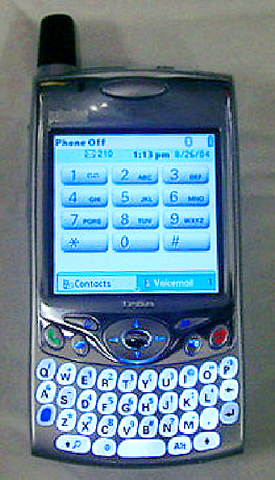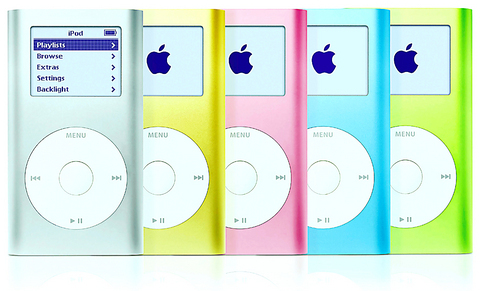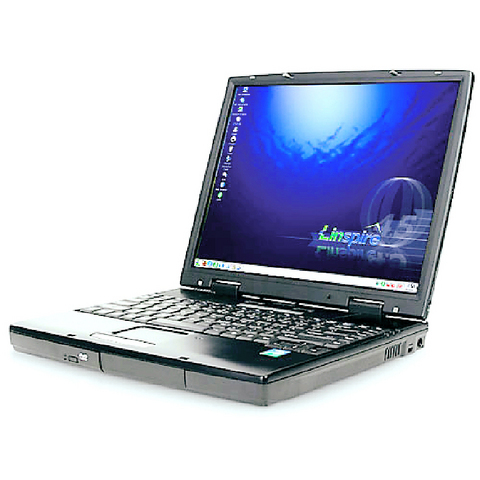With the year's end comes the traditional sleigh-full of "best of" news pieces covering all variety of subjects. Our monthly technology review annually offers the same, but this is more of a technology "milestones" of the year -- a quick look at some of the gadgets and gismos and technologies that have touched our lives and may change our lifestyles.
My pick for gadget of the year would have to be Apple's iPod and iPod mini. It didn't come out this year, but by the beginning of December more than 9 million iPods were sold and most industry-watchers believed that number was going to far exceed 10 million by Christmas morning. What's more, these sleek devices have sparked a war among electronics manufacturers and rightfully had many of them rethinking the clunky space-junk design of many consumer electronics products. People are willing to pay more for wearable devices that don't look like something of Battlestar Galactica. Soon enough, we won't necessarily pay a premium for elegant design as manufacturers compete for the space in our pockets.

But the real revolution Apple has created isn't in the way we carry music, but the way we purchase it. Apple announced earlier this month that their iTunes music store customers have now downloaded over 200 million songs (They were at the 150 million-song mark in mid-October!). Some industry watchers have gone so far to say that if the company's star continues rising at its current rate, it may well sell 1 billion songs by the end of next year.

The company refuses to say how many users iTunes has, but the numbers are still significant. Apple has changed the way we buy music and, for musicians whose catalogs are available for download, significantly reduced the amount of money lost to pirating. My prediction is that, as bit rates gain speed, the next business to move to the Internet will be the neighborhood video store. (Hello, Blockbuster?)
Speaking of downloading from the Internet, 2004 was surely the year the world became wireless, or at least began making huge strides toward becoming so.

While there's no data available as to exactly how much area became covered with Wi-Fi networks this year, based on sales of Wi-Fi hubs, it's believed that overall coverage has grown exponentially more than any previous year. Airports, hotels, cafes and now even homes are going wireless as the price of the technology has dropped. More significantly, whole cities are planning wireless access areas (including Taipei's Shinyi District). Where not long ago people would have to search for a wireless access environment, they're now more likely to be sitting in one already.
As the virtual world has expanded, so has the world of materials. A Virginia-based company called NanoSonic has solved what could be described as the materials chemists' version of the riddle of the Sphinx: What material can conduct electricity like a metal, but stretch like a rubber band?
The answer, of course, is Metal Rubber, a filmy brown material that can extend to three times its original length and conduct electricity as well as a bar of steel. Already Lockheed Martin is using it to create airplane wings with more flex, but scientists believe it could have applications in medicine -- artificial muscles, for example, or more life-like prostheses. On a larger scale consumer basis, we may begin seeing cellphones and laptops that bounce when dropped.
A feature like that would come in handy if you dropped your NT$16,065 Treo 650, my pick for the phone of year. Though it's not a popular model in Taiwan, it's manufactured here by a company called High Tech Computer. In other parts of the world, though, it's taken the bull by the horns, combining a personal digital assistant, telephone, camera and more. The 650, which runs on a Palm operating system, is the upgrade of the Treo 600. But as upgrades go, the 650 is twice the phone the 600 was: twice the screen resolution (320 x 320 from 160 x 160), twice the speed (312Mhz from 144Mhz), and more than twice the photo resolution (1.2 megapixels from 0.3 megapixels).
The 650 also incorporates Bluetooth to make it a truer networking device, though Wi-Fi is noticeably absent. Still, it raises the bar on PDA-cellphone technology, setting the standard by which other manufacturers will inevitably compare their own products.
Already not far behind is another Taiwan-manufactured phone, Benq's P50, which, because it's lighter and smaller than the Treo and foregoes the nubby antenna, would win on style points. But the phone is still too new and untested to give it top honors here.
While it may not be a great feat of technology, it remains a milestone: Wal-Mart Corp has begun offering the Balance Notebook computer, a Linux-based laptop selling at NT$16,000. For that price you get a 14.1" LCD screen, VIA C3 processor, 128MB of RAM, a 30GB hard drive and CD-ROM. No bells and whistles, to be sure, but enough to run most productivity software, Web browsing, e-mail and the like. Kudos to Wal-Mart for saving consumers NT$3,213 by installing Linux.

Many people noticed the flood of pro-China propaganda across a number of venues in recent weeks that looks like a coordinated assault on US Taiwan policy. It does look like an effort intended to influence the US before the meeting between US President Donald Trump and Chinese dictator Xi Jinping (習近平) over the weekend. Jennifer Kavanagh’s piece in the New York Times in September appears to be the opening strike of the current campaign. She followed up last week in the Lowy Interpreter, blaming the US for causing the PRC to escalate in the Philippines and Taiwan, saying that as

Nov. 3 to Nov. 9 In 1925, 18-year-old Huang Chin-chuan (黃金川) penned the following words: “When will the day of women’s equal rights arrive, so that my talents won’t drift away in the eastern stream?” These were the closing lines to her poem “Female Student” (女學生), which expressed her unwillingness to be confined to traditional female roles and her desire to study and explore the world. Born to a wealthy family on Nov. 5, 1907, Huang was able to study in Japan — a rare privilege for women in her time — and even made a name for herself in the

This year’s Miss Universe in Thailand has been marred by ugly drama, with allegations of an insult to a beauty queen’s intellect, a walkout by pageant contestants and a tearful tantrum by the host. More than 120 women from across the world have gathered in Thailand, vying to be crowned Miss Universe in a contest considered one of the “big four” of global beauty pageants. But the runup has been dominated by the off-stage antics of the coiffed contestants and their Thai hosts, escalating into a feminist firestorm drawing the attention of Mexico’s president. On Tuesday, Mexican delegate Fatima Bosch staged a

Would you eat lab-grown chocolate? I requested a sample from California Cultured, a Sacramento-based company. Its chocolate, not yet commercially available, is made with techniques that have previously been used to synthesize other bioactive products like certain plant-derived pharmaceuticals for commercial sale. A few days later, it arrives. The morsel, barely bigger than a coffee bean, is supposed to be the flavor equivalent of a 70 percent to 80 percent dark chocolate. I tear open its sealed packet and a chocolatey aroma escapes — so far, so good. I pop it in my mouth. Slightly waxy and distinctly bitter, it boasts those bright,